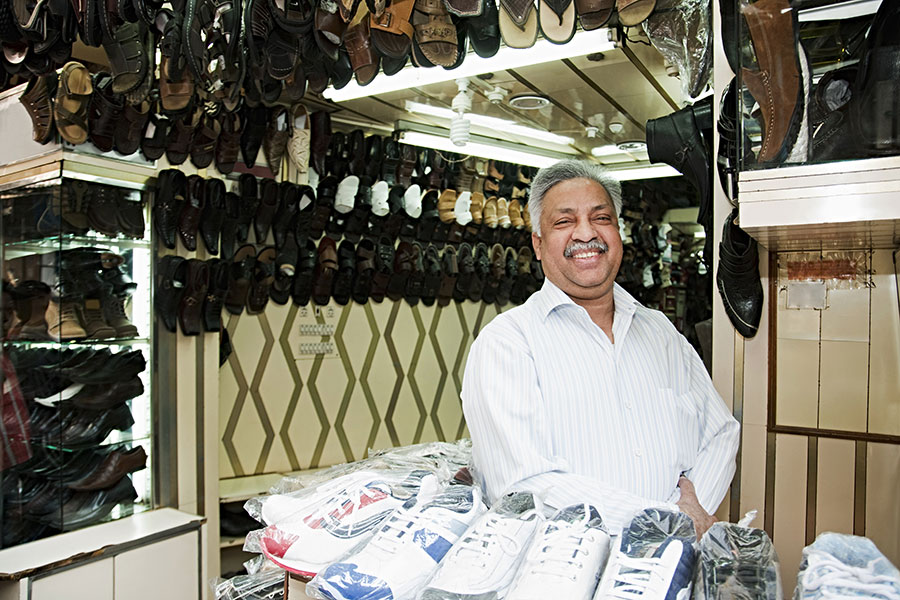HOW IT WORKS
Shoe Stores

- Retail stores specializing in footwear, including shoes, boots, sandals, sneakers, and other types of footwear for men, women, and children. Shoe stores may offer a wide selection of brands, styles, and sizes to accommodate various preferences and needs.
Shoe stores are retail establishments that specialize in selling a wide variety of footwear for men, women, and children. Key characteristics of shoe stores include a diverse selection of brands, styles, and sizes to cater to different preferences and needs. The target audience for shoe stores ranges from fashion-conscious individuals looking for the latest trends to athletes seeking high-performance footwear.
Common products offered by shoe stores include sneakers, boots, sandals, dress shoes, and athletic footwear. Some shoe stores may also provide accessories such as shoe care products, insoles, and socks. Typical business models in this category involve purchasing inventory from manufacturers or wholesalers and selling them to customers through physical storefronts or online platforms.
Notable trends and innovations within the shoe store industry include the rise of sustainable and ethically sourced footwear, personalized shopping experiences through technology like virtual try-on tools, and the growing popularity of direct-to-consumer brands. Shoe stores often differentiate themselves through their unique value proposition, such as offering exclusive collaborations with designers, providing exceptional customer service, or focusing on niche markets like eco-friendly footwear.
Challenges faced by shoe stores include intense competition from online retailers, fluctuating consumer preferences, and the need to stay updated with the latest fashion trends. Despite these challenges, successful shoe stores can differentiate themselves by offering a curated selection of high-quality products, creating a memorable shopping experience, and building strong relationships with customers to foster loyalty and repeat business.
Initial Stage: A shoe store begins by identifying market opportunities and consumer needs in the footwear industry. This involves conducting market research, analyzing trends, and understanding customer preferences.
Product Formulation: The shoe store formulates its products by curating a diverse selection of footwear that caters to different styles, sizes, and preferences. Special emphasis is placed on offering unique and high-quality shoes that provide value to customers.
Marketing and Promotion: The shoe store utilizes various marketing and promotional strategies to reach its target audience, including social media campaigns, collaborations with influencers, and in-store events. The focus is on creating a strong brand presence and generating interest in the store’s offerings.
Sales and Distribution: The shoe store operates through multiple channels, including brick-and-mortar stores, online platforms, and partnerships with other retailers. Customer interactions are key, with a focus on providing personalized service and assistance in finding the perfect pair of shoes.
Post-Sale Services: The shoe store prioritizes customer satisfaction by offering post-sale services such as repairs, exchanges, and returns. This ensures that customers are happy with their purchases and encourages repeat business.
Continuous Improvement: The shoe store constantly gathers feedback from customers and monitors market trends to adapt and improve its offerings. This may involve introducing new styles, updating existing products, or refining marketing strategies to stay competitive in the ever-evolving footwear industry.
In the realm of shoe stores, daily operations face numerous challenges across various domains. Resource management can be a challenge due to fluctuating demand and inventory levels. Communication and collaboration are crucial for sales and customer service but can be hindered by lack of efficient systems. Process inefficiencies, such as long checkout lines or slow restocking, impact customer satisfaction and sales. Inventory management is essential to avoid overstocking or running out of popular items. Quality control ensures customer satisfaction and loyalty but requires constant monitoring. Technology integration can enhance operations but may be costly or complex to implement. Data management is crucial for tracking sales trends and customer preferences, but businesses may struggle with data accuracy and organization. Risk management is important to protect against theft, damages, or economic downturns. To navigate these challenges, shoe stores can invest in inventory management software, improve staff training for better communication, streamline processes for efficiency, and implement quality control measures throughout the supply chain. By addressing these operational areas strategically, shoe stores can overcome daily trials and thrive in a competitive market.
-
Webspad revolutionized our shoe store operations by providing a seamless inventory management solution that optimized our resource allocation. Before, we struggled with fluctuating demand and inventory levels, leading to inefficiencies in restocking and meeting customer needs. With Webspad’s user-friendly tools and expert support, we were able to streamline our inventory processes, ensuring that we always had the right products in stock at the right time. This not only improved customer satisfaction but also boosted our sales and overall operational efficiency. Thanks to Webspad, we now have a reliable system in place that helps us navigate the daily challenges of managing a successful shoe store.
Shoe Stores Merchant Tweet / X

